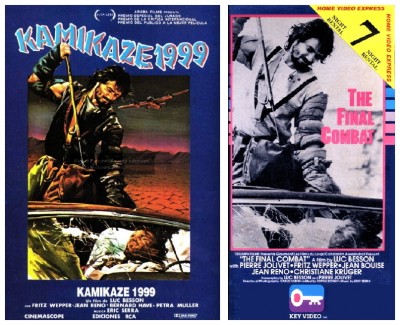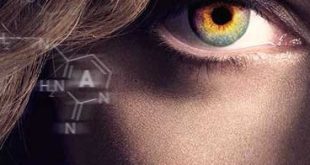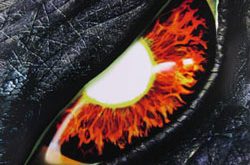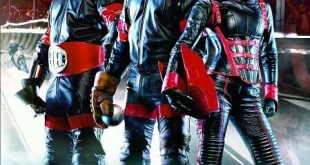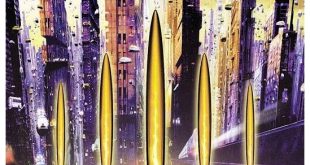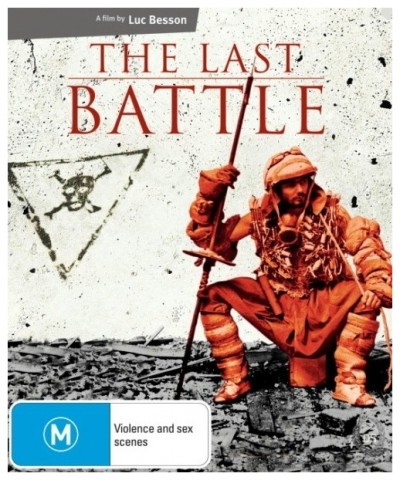 SYNOPSIS:
SYNOPSIS:
“In the post-apocalyptic future, only a few humans are left. No one is able to speak; the film contains no dialogue, and characters communicate non-verbally. A determined loner befriends a reclusive older man and these two battle against vicious thugs for food, shelter and life itself.” (courtesy IMDB)
REVIEW:
Luc Besson has been involved with the making of more than fifty films spanning over a quarter of a century as writer, director, producer or all three. Famous for his visually rich action films and thrillers, his work has garnered many nominations and awards, winning the César Awards Best Director for The Fifth Element (1997). Léon The Professional (1994) and The Messenger: The Story Of Joan Of Arc (1999) were both nominated for Best Picture and Best Director, and his Taken (2008) film franchise has become France’s most successful export in the film industry ever. It all started when Besson was only eighteen years old, when he took odd jobs on film sets to get a feel for the industry. He worked as an assistant to directors like Claude Faraldo and Patrick Grandperret, and eventually directed three short films of his own, as well as a documentary and a few television commercials.
 In 1980 Besson founded his own production company called Les Films Du Loup (later renamed Les Films Du Dauphin) and soon met multi-talented musician Éric Serra, who composed the score for Besson’s first short film L’Avant Dernier (1981). Post-apocalyptic films were still big when Besson made his first feature film The Final Combat (1983) alternately titled Le Dernier Combat, The Last Battle, or Kamikaze 1999, based on his earlier short L’Avant Dernier. But Mad Max (1979) and its sequel The Road Warrior (1981) – and many of their cheap imitators – are of minor relevance for understanding Besson’s film. The Final Combat is a completely different beast from the typical post-apocalyptic movie, and has more in common with Chris Marker‘s La Jetée (1962), Spike Milligan‘s The Bed-Sitting Room (1969) or even John Boorman‘s Zardoz (1974).
In 1980 Besson founded his own production company called Les Films Du Loup (later renamed Les Films Du Dauphin) and soon met multi-talented musician Éric Serra, who composed the score for Besson’s first short film L’Avant Dernier (1981). Post-apocalyptic films were still big when Besson made his first feature film The Final Combat (1983) alternately titled Le Dernier Combat, The Last Battle, or Kamikaze 1999, based on his earlier short L’Avant Dernier. But Mad Max (1979) and its sequel The Road Warrior (1981) – and many of their cheap imitators – are of minor relevance for understanding Besson’s film. The Final Combat is a completely different beast from the typical post-apocalyptic movie, and has more in common with Chris Marker‘s La Jetée (1962), Spike Milligan‘s The Bed-Sitting Room (1969) or even John Boorman‘s Zardoz (1974).
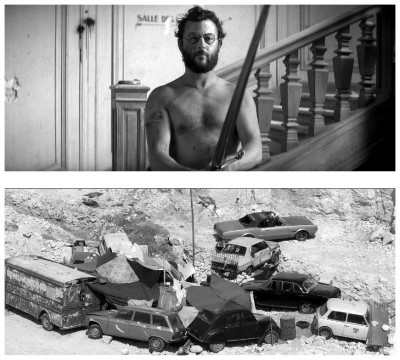 The plot explores the devastation of civilisation and issues of brutality, hostility and isolation. “The sky is raining fish. Skyscrapers sit in mountains of sand. Bandits sleep in trunks of used cars. It’s a world of the future. A world called Planet Earth. And he’s one man just trying to survive. The world is dying, the tribes are killing, the iron samurai is waiting…” states the poster art. The first and most obvious curiosity is actually more than that, and becomes an important plot point – the absence of any dialogue during the film, apart from two whispered words that come on one important occasion. The explanation given for this lack of speech is that the atmosphere has become so polluted that speaking is no longer possible. Without communication there is also no need for names, and each nameless character is described with one or two words: The Man, The Brute, The Doctor, The Captain, etc.
The plot explores the devastation of civilisation and issues of brutality, hostility and isolation. “The sky is raining fish. Skyscrapers sit in mountains of sand. Bandits sleep in trunks of used cars. It’s a world of the future. A world called Planet Earth. And he’s one man just trying to survive. The world is dying, the tribes are killing, the iron samurai is waiting…” states the poster art. The first and most obvious curiosity is actually more than that, and becomes an important plot point – the absence of any dialogue during the film, apart from two whispered words that come on one important occasion. The explanation given for this lack of speech is that the atmosphere has become so polluted that speaking is no longer possible. Without communication there is also no need for names, and each nameless character is described with one or two words: The Man, The Brute, The Doctor, The Captain, etc.
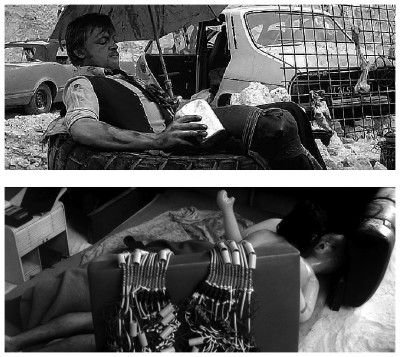 The stark wastelands are beautifully filmed in black-and-white, and the resounding silence is counterbalanced by Éric Serra‘s atmospheric score. At the beginning of the film, The Man (Pierre Jolivet) is building an aircraft and just wants to escape, but he soon finds some unexpected company in a desolate city and everything changes. The Man is menaced by The Brute (Jean Reno) on his journey through a world filled by people rendered virtually mute. They live in a world of improvised weapons and armour, fighting for survival, a world of rivalry and punishment rather than cooperation. Besson’s world is a wasteland haunted by memories of past times, but his bleak depiction of the future doesn’t automatically invoke the sense of nihilism already made familiar by George Miller‘s post-apocalyptic films. On the contrary, Besson is reaching toward an almost childlike innocence in the way his characters perceive their brave new world.
The stark wastelands are beautifully filmed in black-and-white, and the resounding silence is counterbalanced by Éric Serra‘s atmospheric score. At the beginning of the film, The Man (Pierre Jolivet) is building an aircraft and just wants to escape, but he soon finds some unexpected company in a desolate city and everything changes. The Man is menaced by The Brute (Jean Reno) on his journey through a world filled by people rendered virtually mute. They live in a world of improvised weapons and armour, fighting for survival, a world of rivalry and punishment rather than cooperation. Besson’s world is a wasteland haunted by memories of past times, but his bleak depiction of the future doesn’t automatically invoke the sense of nihilism already made familiar by George Miller‘s post-apocalyptic films. On the contrary, Besson is reaching toward an almost childlike innocence in the way his characters perceive their brave new world.
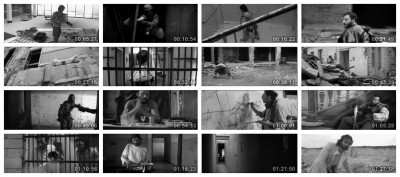 Even their conflicts are reminiscent of some sort of carefully choreographed game. At first they are struggling to survive, but buried beneath their primal instincts are still some leftovers of distorted humanity that could be triggered with some simple forgotten craft – like trying to read a book, to play pin-pong, even to speak. Those moments are both touching and funny and, sometimes, downright weird. One of the most bizarre scenes is when it suddenly starts to rain fish. In almost any other film, in a different context, this would surely seem like a pretty random event but, here, it comes naturally. If Mad Max (1979) is about physically surviving the apocalypse, The Final Combat asks: “How are you supposed to feel and think and become a civilised human being again?”
Even their conflicts are reminiscent of some sort of carefully choreographed game. At first they are struggling to survive, but buried beneath their primal instincts are still some leftovers of distorted humanity that could be triggered with some simple forgotten craft – like trying to read a book, to play pin-pong, even to speak. Those moments are both touching and funny and, sometimes, downright weird. One of the most bizarre scenes is when it suddenly starts to rain fish. In almost any other film, in a different context, this would surely seem like a pretty random event but, here, it comes naturally. If Mad Max (1979) is about physically surviving the apocalypse, The Final Combat asks: “How are you supposed to feel and think and become a civilised human being again?”
 The Final Combat is most of all a work of style and dedication, which makes clear why Besson is a director of choice: good taste; beautiful framing; excellent use of music; and the promise of great achievements to come. It is recommended to anyone who needs to learn a lesson how to make an effective movie on an extremely low budget. Besson served as writer, producer and director for the film, which has deservedly received cult status: black-and-white with virtually no dialogue, and it’s the first of many collaborations between director Luc Besson, actor Jean Reno, and composer Éric Serra. It’s at this juncture I’d like to ask you to please join me next week so I can poke you in the eye with another frightful excursion to the backside of Hollywood, filmed in glorious 2-D black-and-white Regularscope for…Horror News! Toodles!
The Final Combat is most of all a work of style and dedication, which makes clear why Besson is a director of choice: good taste; beautiful framing; excellent use of music; and the promise of great achievements to come. It is recommended to anyone who needs to learn a lesson how to make an effective movie on an extremely low budget. Besson served as writer, producer and director for the film, which has deservedly received cult status: black-and-white with virtually no dialogue, and it’s the first of many collaborations between director Luc Besson, actor Jean Reno, and composer Éric Serra. It’s at this juncture I’d like to ask you to please join me next week so I can poke you in the eye with another frightful excursion to the backside of Hollywood, filmed in glorious 2-D black-and-white Regularscope for…Horror News! Toodles!
 Horror News | HNN Official Site | Horror Movies,Trailers, Reviews
Horror News | HNN Official Site | Horror Movies,Trailers, Reviews
